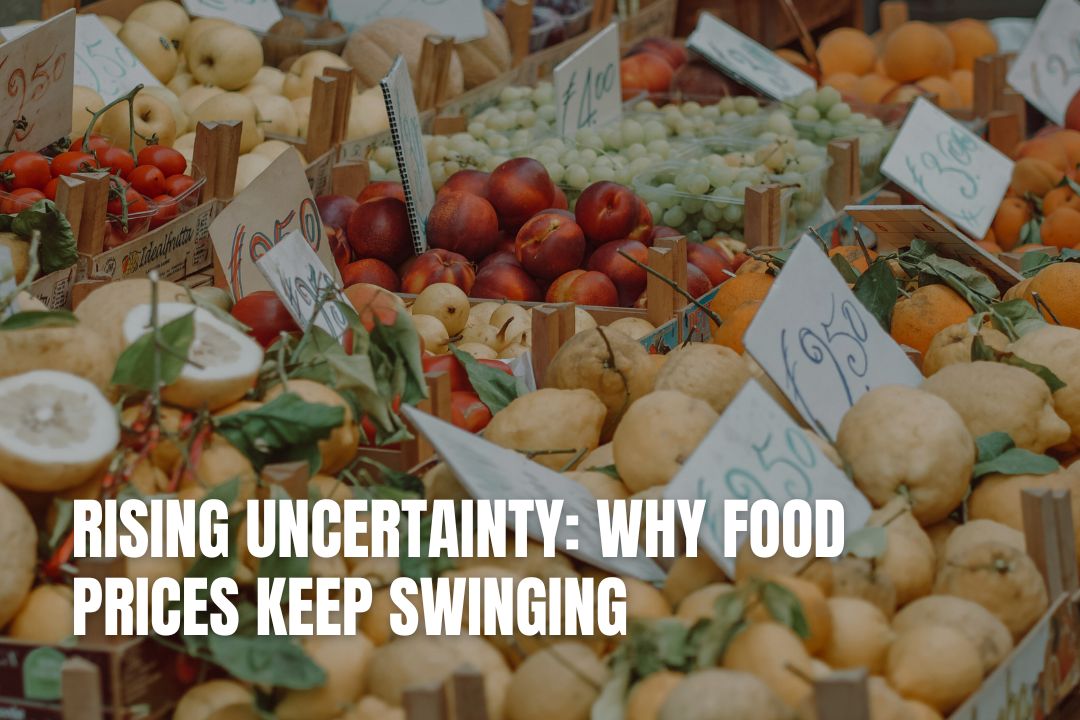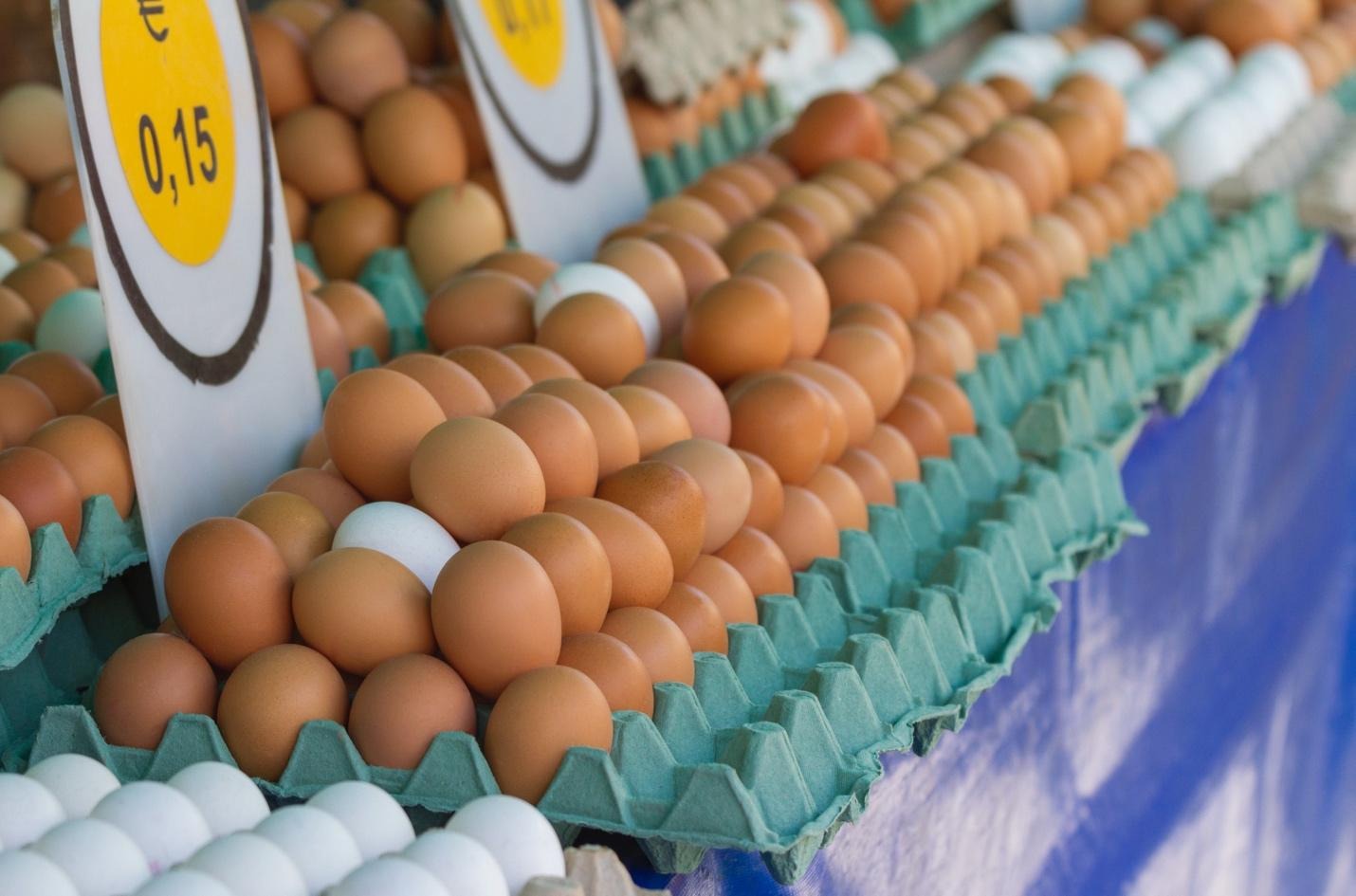Rising Uncertainty: Why Food Prices Keep Swinging
October 14, 2025

Food prices have become increasingly unpredictable in recent years. One month, costs appear stable, and the next, consumers face sharp increases at the checkout. For businesses and households alike, this volatility can disrupt budgets, strain supply chains, and erode confidence in long-term planning. Understanding the key drivers behind these price swings is essential for anticipating future trends and building strategies that can withstand disruption.
Key Takeaways on Food Price Volatility
- Climate and Weather Extremes: Unpredictable weather events like droughts and floods are major culprits, directly impacting crop yields and disrupting the food supply, which in turn causes prices to spike.
- Energy and Supply Chain Costs: The price of food is closely tied to energy costs. Higher expenses for fuel, electricity, and transportation for farming and distribution are often passed directly on to you at the checkout.
- Geopolitical and Trade Factors: Global conflicts, trade restrictions, and government policies can instantly shrink the available food supply, creating instability and driving up costs in different regions.
- Financial Risk Management: To counter the uncertainty, businesses in the food sector are increasingly using financial tools and data analysis to anticipate price changes and protect their operations from sudden market swings.
Register Your LLC
Company Registration
START NOW
Climate Change and Weather Extremes
Extreme weather is one of the most significant contributors to food price instability. Droughts, floods, and shifting weather patterns directly affect crop yields, livestock health, and distribution efficiency. Similarly, unexpected storms or heavy rainfall can delay transportation and spoil harvests before they reach markets.
Producers are adapting through improved irrigation, climate-resilient crops, and advanced forecasting models. However, as climate risks intensify, even the best-prepared agricultural systems are exposed to sudden shocks that can disrupt supply and send prices soaring.
Energy Costs and Supply Chain Pressures
Energy prices play a crucial role in food production and distribution. Fertilizer manufacturing, machinery operation, and refrigeration all depend on fuel or electricity. When energy costs rise, food producers face higher operating expenses that often pass down the chain to wholesalers, retailers, and consumers. Transportation adds another layer of vulnerability. Global supply networks remain fragile after years of logistical disruptions, from pandemic lockdowns to trade restrictions and port congestion.
Recent increases in fuel prices and freight rates have amplified these pressures. A container of produce shipped across the ocean now costs significantly more than it did just a few years ago. For perishable goods that require refrigeration, those expenses can climb even higher.
Geopolitical Instability and Trade Dynamics
Global politics continues to shape the food economy. Conflicts in major agricultural regions, trade sanctions, and export restrictions can reduce global supply overnight. Grain markets, in particular, react quickly to disruptions in major exporters. Political decisions around tariffs, agricultural subsidies, or import quotas can further distort market balance and create regional price disparities.
In many cases, governments attempt to control inflation by intervening in markets, such as capping food prices or limiting exports. While these measures can offer short-term relief, they often lead to unintended consequences elsewhere.
Managing Financial and Commodity Risk
Businesses in the food industry are responding with more advanced financial tools to hedge against uncertainty. Futures contracts, crop insurance, and risk-sharing arrangements have become increasingly common. Large producers and distributors rely on data analytics and predictive modeling to forecast price trends and identify vulnerabilities before they escalate.
A sector gaining particular attention is dairy, where price fluctuations are influenced by both seasonal production patterns and international demand. Companies that implement dairy risk management programs can mitigate exposure to these swings. Similar risk-based approaches are being applied across other food categories, helping stabilize financial planning in volatile conditions.
While volatility in food prices is unlikely to disappear, informed action can help transform uncertainty into opportunity, supporting a more stable and sustainable global food economy. To learn more, feel free to look over the accompanying resource below.

FAQs for Rising Uncertainty: Why Food Prices Keep Swinging
Why are my grocery bills so unpredictable?
Your grocery costs fluctuate due to a combination of factors. These include extreme weather events damaging crops, rising energy prices that increase transport and production costs, and global political instability that disrupts supply chains. All these elements contribute to the price swings you see.
How does climate change directly affect food prices?
Climate change increases the frequency of severe weather like droughts, floods, and storms. These events can ruin harvests and make it harder to transport food, leading to shortages and, consequently, higher prices for everyday items.
Are high fuel prices really linked to the cost of food?
Yes, there is a direct link. Fuel is essential for running farm equipment, producing fertilisers, and transporting food from the farm to your local shop. When fuel prices go up, the cost to produce and deliver food also rises.
What can businesses do to manage these unpredictable costs?
Companies are adopting smarter strategies to handle price volatility. Many use financial instruments like futures contracts and insurance to hedge against risk. They also use data analytics to forecast trends, helping them make better decisions to keep their supply chains stable. For businesses looking to formalise their operations, services from Storific can provide a solid legal foundation.

